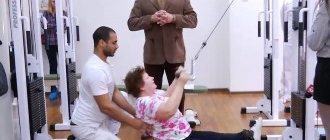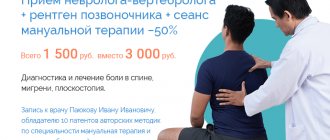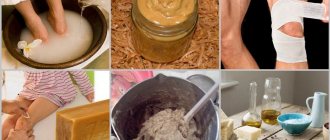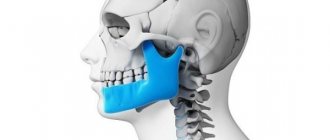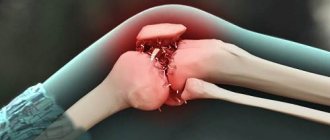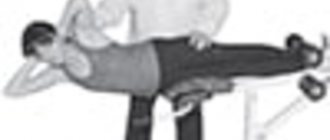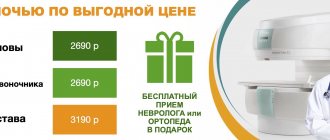Reactive arthritis
Rheumatoid arthritis
Psoriatic arthritis
Gouty arthritis
The designation “arthritis” is collective. It is used to identify any inflammatory joint pathologies. The disease can occur in both acute and chronic forms, with one or more affected joints.
Arthritis of the fingers, knees, feet or other joints is rightfully considered one of the most widespread diseases today. For example, in the USA, this pathology ranks first among the causes of disability in the population.
You can undergo a course of treatment for arthritis at the CELT multidisciplinary clinic. In order to receive professional medical care from us, it is not necessary to have a residence permit in the capital.
At CELT you can get a consultation with a traumatologist-orthopedic specialist.
- Initial consultation – 3,000
- Repeated consultation – 2,000
Make an appointment
Etiology
It is believed that arthritis of the knee or other joints can occur due to various reasons, but the cause of rheumatoid arthritis has not yet been established. As for other types of pathology, the following are listed as factors that provoked its appearance:
- prolonged hypothermia of joints;
- maintaining a sedentary lifestyle;
- excessive physical activity;
- the presence of pathologies of an autoimmune nature;
- exposure to infections;
- injuries;
- severe stress.
Symptoms of joint arthritis.
With arthritis, joint pain is constant. Pain is felt during movement, as well as at rest. The pain is stronger at the beginning of the movement and eases somewhat as the joints “develop.” For arthritis of the joints
The following symptoms are typical:
- Increased skin temperature over the joint. Redness of the tissues is observed.
- “Stiffness” in the joints or spine. Arthritis of the joints negatively affects the mobility of the affected area.
- Characterized by swelling of the skin and swelling over the affected joint.
- Joints with arthritis gradually become deformed.
- Arthritis of the joints
may be accompanied by symptoms such as fever, general weakness and leukocytosis. - Extremely severe, unbearable pain, completely immobilizing the patient, is typical for purulent arthritis, gout and other microcrystalline arthritis of the joints.
Classification of arthritis
There are 2 types of arthritis - degenerative and inflammatory. Among the inflammatory ones, infectious, rheumatoid, and reactive are noted. Also included in this category is a disease such as gout. The pathology develops against the background of an inflammatory process in the synovial membrane. The degenerative type includes osteoarthritis and traumatic arthritis, which appear due to injury to cartilage tissue.
All types of arthritis are divided into chronic, acute, subacute. In the acute form, the pathology has a purulent, serous-fibrinous, serous character. The disease progresses to a severe stage when a fibrinous sediment appears. A serious complication is the appearance of capsular phlegmon, which is formed due to the accumulation of pus.
Chronic and subacute arthritis are characterized by changes in the villi of the synovial membranes, as well as tissue proliferation and fibrosis. Subsequently, destruction and bleeding of the osteochondral flap occurs, as granulation tissue forms on the outer layer of cartilage. Over time, this causes the formation of bone ankylosis, which provokes changes in the shape of the joints, contracture and subluxation.
Division is also carried out according to the location of the inflammatory process. There are mono- and polyarthritis that affect one or more joints. Primary arthritis appears due to injuries and disorders of the immune system, while secondary arthritis is associated with deformation of the periarticular tissues and bone parts of the joint. The primary form includes gonorrheal, tuberculosis, viral, dysenteric arthritis. Secondary appears against the background of malignant neoplasms, diseases of the gastrointestinal tract and respiratory system, osteomyelitis.
Different types of joints are affected by certain types of arthritis. For example, rheumatoid appears on the ankle, hand, and wrist joints. Psoriatic disease leads to the destruction of the distal joints, and ankylosing spondylitis affects the spine and joints of the sacroiliac joint.
2. Reasons
The cause-and-effect relationship between intestinal ulceration and joint diseases remains unclear.
It is assumed that these connections are multiple and complex, where the leading role is played by the presence of toxic and immune factors in the blood - various kinds of antibodies, possibly aggressive towards one’s own joint tissues.
As a rule, peripheral arthritis in ulcerative colitis and Crohn's disease manifests itself in the age range of 20-40 years, although there are exceptions in both directions. Inflammation of peripheral joints is common among male and female patients with equal frequency.
Ankylosing (“ossifying,” immobilizing) spondylitis involving the spine is three times more common in men. As a rule, the histocompatibility antigen HLA-B27 is detected in the blood of such patients.
Visit our Rheumatology page
Diagnostics
Diagnosing joint arthritis can be very difficult. The reason for this phenomenon is that the reasons that caused the pathology may be different. There are a number of such arthritis, the diagnosis of which is quite simple - but there are other types, which can only be determined by an experienced doctor after a comprehensive diagnostic examination.
This is exactly how the specialists at the CELT clinic work. They know how to establish the exact cause of the disease and identify the most effective treatment tactics. Diagnostics in this case includes the following:
- taking anamnesis;
- identifying the connection between pathology and other diseases or injury;
- drawing up a clinical picture of arthritis;
- conducting laboratory research;
- conducting instrumental diagnostics: radiography, ultrasound, or MRI;
- arthroscopy.
3. Symptoms and diagnosis
In most cases, the symptoms of arthritis develop several years after the manifestation of the underlying disease, but in some cases the exact opposite happens: arthritis turns out to be an early symptom of latently progressive intestinal ulceration. Subsequent exacerbations of joint inflammation usually coincide with exacerbations of ulcerative colitis or Crohn's disease.
The duration of such attacks is usually 1-5 months. The most common symptoms are pain in the affected joints, their swelling, increased skin temperature in the projection of inflammation, limited and painful movements. With frequent relapses, persistent or irreversible changes may develop in the joints. In some cases, symptoms are limited to arthralgia.
As a rule, “intestinal” arthritis is accompanied by a number of other extraintestinal, but clearly associated types of pathology (uveitis, pyoderma, erythema nodosum, etc.).
Ankylosing spondylitis accounts for no more than 5-7% of joint diseases associated with intestinal pathology. The symptoms and course completely coincide with those of “ordinary” ankylosing spondylitis (ankylosing spondylitis); at least, to date, no significant differences have been found - except that with ulcerative colitis and Crohn's disease, this severe disease of the joints and spine develops more often than in the absence of these intestinal inflammations.
Methods for reliable diagnosis of arthritis and spondylitis of this etiology - in their differentiation, say, from rheumatoid arthritis - have not been developed. There are also no criteria for instrumental, in particular, radiological differential diagnosis. The main importance is given to laboratory blood tests, the results of which, however, are more correlated with the characteristics of intestinal inflammation than joint inflammation. Thus, the greatest importance for the correct qualification of what is happening is the study of the anamnesis and the comparison of all available clinical and diagnostic data.
About our clinic Chistye Prudy metro station Medintercom page!
Our doctors
Samilenko Igor Grigorievich
Traumatologist - orthopedist, doctor of the highest category
24 years of experience
Make an appointment
Zubikov Vladimir Sergeevich
Traumatologist-orthopedist, Doctor of Medical Sciences, doctor of the highest category, professor
44 years of experience
Make an appointment
Marina Vitaly Semenovich
Traumatologist-orthopedist, head of the minimally invasive traumatology and orthopedics service
Experience 36 years
Make an appointment
Poltavsky Dmitry Ilyich
Traumatologist-orthopedist
Experience 28 years
Make an appointment
Treatment
Treatment tactics are selected by CELT specialists based on a number of individual factors. Treatment of arthritis in the initial stages of development invariably gives good results, due to the absence of joint deformation. The tactics provide for an integrated approach. Typically, treatment includes the following:
- drug treatment with individual selection of drugs;
- pain relief with ointments, creams and gels;
- use of chondroprotectors;
- restorative massage, ultrasound treatment;
- physiotherapy;
- properly selected diet.
4.Treatment
Experts believe that active treatment of the underlying (intestinal) disease is a mandatory and priority measure: reduction of its symptoms somehow leads to relief of joint symptoms. Medications usually include NSAIDs (nonsteroidal anti-inflammatory drugs); in more severe cases, glucocorticosteroid hormones are injected into the joint. As a rule, symptoms are relieved quite effectively with these drugs.
As for ankylosing spondylitis, having begun against the background of ulcerative colitis or Crohn's disease, it subsequently develops independently and regardless of the phases of the underlying disease. Treatment also does not differ from conventional therapeutic regimens for ankylosing spondylitis (NSAIDs, corticosteroids, immunosuppressants, immunomodulators).
Prevention
The main rule for preventing arthritis is changing your diet and moderate exercise in the gym. It is important to reduce the amount of animal fats in the diet, give up alcohol, and reduce the amount of sour and salty foods. It is advisable to eat more fresh fruits and vegetables, as well as control your body weight (avoid excess weight). Therapeutic massage is recommended, as well as regular exercise (without high stress on the joints).
It is also possible to use surgical intervention, but our specialists practice it only in extreme cases, if indicated. The operation is indicated if the joint is completely destroyed or antibiotics do not stop the inflammatory processes. It is aimed at removing the affected joint and replacing it with a prosthesis.
Types and causes of joint arthritis.
Each type of arthritis has its own causes. These can be diseases of the nervous system, injuries, infections, metabolic disorders, immune system failures, hypothermia and much more.
Depending on the cause, there are several types of joint arthritis:
- Arthritis of the joints is “traumatic”
. This type of arthritis occurs with closed and open joint injuries, as well as with frequently repeated minor injuries. It can occur due to a fall and injury. - Dystrophic arthritis
. Dystrophic arthritis of the joints occurs due to metabolic disorders in the body, physical overexertion, hypothermia, and lack of vitamins. - Infectious arthritis of the joints
(rheumatism, rheumatism). Associated with the consequences of a viral or bacterial infection. Infectious arthritis of the joints mainly affects large joints. The causative agents of infectious arthritis of the joints are streptococci, gonococci, Haemophilus influenzae and tuberculosis bacilli, fungal and yeast infections. - Rheumatoid arthritis
. The most painful form of joint arthritis. Rheumatoid arthritis of the joints has the following symptoms: damage to three or more small joints of the hand, which lasts for more than three months; The pathological process often involves symmetrical joints of both hands (for example, both first joints of the index fingers on the left and right hands). Often this type of arthritis can be observed not only in the hands, but also in the joints of the toes and ankle joints.
Orthopedics and traumatology services at CELT
The administration of CELT JSC regularly updates the price list posted on the clinic’s website. However, in order to avoid possible misunderstandings, we ask you to clarify the cost of services by phone: +7
| Service name | Price in rubles |
| Appointment with a surgical doctor (primary, for complex programs) | 3 000 |
| X-ray of bones and joints of the limbs | 2 200 |
| MSCT of the knee joint | 7 500 |
| MRI of the elbow joint (1 joint) | 7 000 |
All services
Make an appointment through the application or by calling +7 +7 We work every day:
- Monday—Friday: 8.00—20.00
- Saturday: 8.00–18.00
- Sunday is a day off
The nearest metro and MCC stations to the clinic:
- Highway of Enthusiasts or Perovo
- Partisan
- Enthusiast Highway
Driving directions
